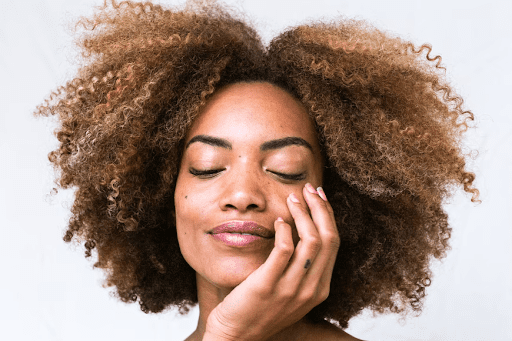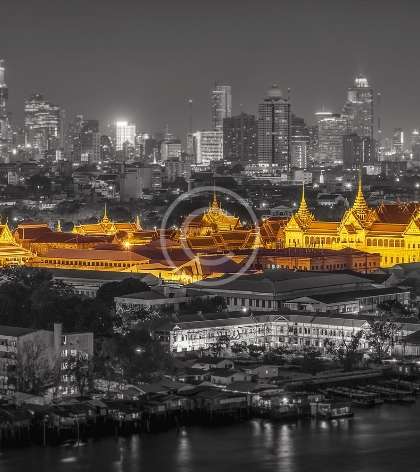All of us have our unique hair type, and knowing yours can help you make a better choice when it comes to your daily regimen. We all want those locks that are healthy, smooth, shiny, and bouncy. However, knowing which type of hair we have is essential as this will determine what products we should use on our tresses and how we should use them. There are many different categorizations when it comes to determining hair types, so it may be confusing to know which one to go by. In this article, we will be discussing different classifications that will help you determine your hair type.
L.O.I.S system
The L.O.I.S system is one of the most popular systems used to determine hair types. This system stands for Length, Oils, and Sheen. As explained in a comprehensive guide to hair typing system, It classifies hair into four categories: type 1, 2a, 2b, and 3a. Type 1 is considered the “straightest” hair type. These locks are typically smooth and shiny with a low sheen. They don’t usually frizz or curl and have a low oil production.
Type 2a is wavy hair that has a medium shine and some Frizz. These waves usually aren’t very defined and can be difficult to control. These strands produce more oils than type 1 hair does. Type 2b is a wavy hair type that has a medium sheen. These waves or curls are not very defined and can be difficult to control. This hair type also produces more oils than Type 1 hair does, but not as much as Type 2 a’s locks do.
Type 3a is curly hair with low shine and medium frizz. These strands give off the most oil of all types, so they will need more conditioning treatments than your other tresses may require. Type 3b is kinky curly with low shine and high frizz. Like Type 3a, these locks produce plenty of natural oils to help them maintain their health, however, this kind of lock tends to resist moisture, therefore, needing even more love and care.
Hair Density Classification
Hair density is the measure of how thick or thin a certain strand is. This can help figure out your hair type. Denser strands tend to be thicker and may require more effort to maintain, especially when it comes to frizzes and tangles. Hair that has finer density tends to be thinner and requires less attention when it comes to tangles and frizzes. For instance, if your hair is finer in density, you will want to opt for lighter products because heavy gels may weigh down the locks and cause frizzes. If your tresses are denser, then opting for heavier creams or serums will help keep your curly locks under control.
Hair Porosity Classification
Hair porosity refers to how easily moisture can penetrate hair strands. This is how well the hair absorbs and retains moisture. There are three different levels of porosity: low, high, and normal/medium porosity.
Low Porosity hair readily receives moisture but also loses it quickly due to evaporation. The cuticle layer of this kind of strand is compact which means that it’s tightly sealed. Moisture needs to break down this compact layer before penetrating the strand. High porosity hair has an open cuticle layer which makes it difficult for moisture to penetrate quickly while washing, causing moisture loss during shampooing. Products that help with humidity resistance will work best on high porosity locks because they seal up cuticles and give strands more elasticity. Normal or medium porosity hair still absorbs some product without being weighed down by heavy creams or serums. However, this kind does not retain as much moisture as low porosity do.
Hair Texture
Another way to determine your hair type is by its texture. The texture is how the individual strands feel when touched. There are four textures: fine, medium, coarse, and very coarse.
Fine hair is somewhat thin and feels silky to the touch. It’s also very lightweight and doesn’t hold a style well. Coarse hair is thick and feels gritty to the touch. This type of hair often has a tightly coiled texture that resists moisture and takes longer for this kind of strand to get oily or greasy. Medium texture hair falls somewhere in between fine and coarse, which means it may be hard to manage sometimes. It’s still relatively easy to damage but not as much as fine strands may experience because medium textures can handle more products than their finer counterparts.
Lastly, the very coarse textures are strong and rough to the touch. This type of strand is usually dry, frizzy, and has a lot of shrinkages. At the same time, it can be prone to damage because it’s typically the strongest type of the four textures.
Hair Curl Type
Now that we have gone over different classifications, it will be easier for you to determine which type of curl you have. There are three curl types: wavy, curly, and kinky. Wavy hair has an S-shaped strand and is the loosest of all the curl types. Curly hair has a Z-shaped strand and is tighter than wavy locks. Kinky curly hair is the tightest of all three types and has a very small circumference when in its natural state.
So, there you have it. The five ways to figure out your hair type. Once you’re armed with this knowledge, then you can move on to the next step of understanding how to care for your hair so that you can start treating it with some new products.




